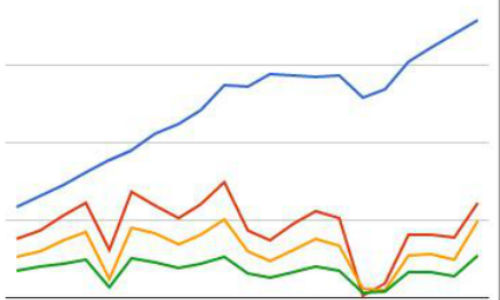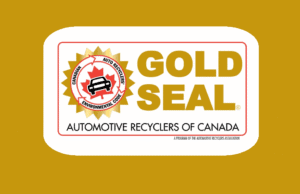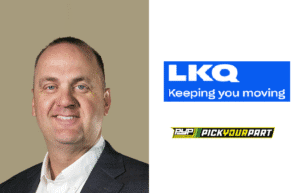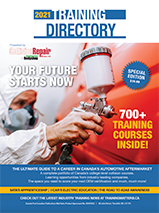
By Jeff Sanford
Toronto, Ontario — November 24, 2015 — Newly minted publicly-traded recycling conglomerate Fenix Parts has been having a bit of a time convincing investors to get into the stock. The company went public in May at $11 a share. But over the past several months the price of shares has swooned, settling down to just a bit above $5 by mid-November.
The latest earnings announcement did not help instill confidence in investors. The company reported a loss of $23 million over the quarter. That never helps win investor trust. Some unexpected complexity around the initial financial reporting at the company also generated some headlines in the investment press.
However, a look under the hood of Fenix reveals a far more positive story than the one reported in the American investment press. Indeed, the real story is, arguably, that the early bumps have been ironed out amd the company is just now beginning to get up to speed.
Chris Kettmann works for investor relations firm, Clermont Partners, on the Fenix file. In a recent conversation with Collision Repair magazine he confirmed there is more to the story than some realize. “You’re right, the bottom-line results were not what one might have hoped,” said Kettmann. “But [Fenix executives] tried to reinforce that the core business, used auto parts sales, performed well, but was masked by items outside their control.”
That is, certain one-time items, among them low commodity prices and foreign currency translations, negatively affected earnings. So too did significant non-cash and non-recurring charges associated with being a new public company, including high accounting costs associated with the SEC filings.
But outside of these one-time charges, the deeper story at Fenix is still a good one. Working through the comments in the company’s recent conference call reveals this to be so.
The company’s CEO, Kent Robertson, led the call. He noted that in the latest quarter, “the company experienced unusually high non-cash and non-recurring expenses. We expect that these expenses will taper over the near term as we have implemented a new accounting platform to shift away from the use of outside consultants.” He also noted that expensive and voluminous SEC filings will be significantly less complicated beginning in the first quarter of next year as the company digests the costs of the recent IPO.
That is, as the company gets over the initial hurdles raised by going public, operations will settle into a more predictable pattern. Providing an update on the business strategy, Robertson noted that, during the quarter Fenix focused much of its time and effort on integrating the founding company businesses. “Operationally, our primary focus since the IPO has been on the integration of our companies in an effort to capture organic growth opportunities and realize synergies,” said Robertson.
But as the companies merge, the deep promise of the Fenix business story—reaping the economies of scale that come with a large company—will begin to be realized. “A number of initiatives are underway that we believe will improve inventory diversity and product availability as we drive revenue and expand margin throughout our existing distribution network,” said Robertson.
Some of these initiatives, already underway, include:
– The coordination of vehicle procurement. The company will begin to buy cars more effectively to eliminate competition for the same cars at auction and to cover more auction opportunities. This is a key first step toward the company’s goal of improving the diversity of cars it buys, while eliminating the number of redundant parts acquired. “In the quarter, we implemented a bidding platform that allows us to include historical part demand and company-wide inventory information,” said Robertson. “This step allows us to make buying decisions based on company parts inventory and demand, not just location-based inventory, as it has been in the past.” This is important. The company will enhance the diversity of the parts available for sale, but will also make its sales force more effective as they will have more parts to sell and ultimately increase fulfillment rates.
– The company is also utilizing its so-called “hub and spoke” model to deliver products to customers. By acquiring parts across a wide geographic area, and then hosting them in a central location, the entire network benefits.
– The company has also identified organic growth opportunities, including the implementation of a “new parts pricing strategy” and growing distribution in existing and adjacent markets.
Another of the original business incentives for merging the eight founding companies into Fenix Parts was the ability to implement initiatives that would increase efficiencies and reduce costs. The company is now doing this. “We are leveraging our self-service business by aggregating different commodities from our locations into trailer-load quantities in order to maximize their value at the time of sale,” says Robertson. “We are not aggregating our high volume car bodies but we are aggregating products such as batteries, copper wire, catalytic converters, aluminum, wheels, tires and other commodities into individual truckload quantities in order to get improved pricing and incur lower transportation costs at the time of sale.” That could only happen across a larger company.
“In addition, we are reducing our [expenses] by leveraging our volume to realize savings on towing, route distribution and other costs,” says Robertson. “We are evaluating our company-wide towing cost structure to get the most cost-effective options, and have already seen savings in certain markets. We are also evaluating a variety of factors such as route productivity and customer overlap in order to identify the lowest-cost approach to delivering our parts.”
That is, it is only now that the company is beginning to put into play the many cost-saving programs that will help make this company profitable and a major player in this industry. “Given we’re only six months out from our IPO, these initiatives are all relatively new and we’d expect to begin realizing their operational and financial benefits as they take hold in 2016 and beyond,” sasy Robertson.
The other big component of the Fenix business plan is to grow through acquisition. There are significant benefits of scale in this business. And that makes acquisitions extremely attractive. The benefits include increased parts availability through the hub, synergies relating to how the company buys cars, tows and distributes products to customers. Combining these operations provides “leverage” on the fixed cost structure and general corporate administration costs.
So no wonder, according to Robertson, that, “Interest in being part of Fenix Parts has remained extremely strong. Our business development team has continued to identify and speak with a number of high-quality companies that are owned and operated by strong management teams.”
These potential acquisition candidates fit the company’s criteria for operating in geographies adjacent to its existing markets with the potential to expand distribution, dismantling, warehouse and yard capacity.
In the third quarter Fenix closed the first acquisition since its May IPO with the purchase of Ocean County Auto Wreckers in Bayville, New Jersey. Ocean had been a trade partner with the founding companies. It is a full-service auto recycling facility that has been in business since 1959, and represents Fenix Parts’ second location in New Jersey, providing better coverage in the state as well as a location to support the Philadelphia market. Ocean County had revenues of approximately $8 million over the 12-month period ending June 30, 2015. For the roughly six weeks in the quarter in which it was under the Fenix umbrella, Ocean generated approximately $1 million in revenue. Expect similar acquisitions in the future.
In October, Fenix made two additional acquisitions, providing momentum on the expansion front, both in the state of North Carolina. Butler Auto Sales and Parts is a full-service auto recycling facility located in Forest City, North Carolina that serves Charlotte and the surrounding markets. It represented Fenix Parts’ first location in North Carolina. For the twelve months ended July 31, 2015, Butler had revenues of approximately $9 million. The company focuses on high-quality, late-model vehicles, and because of their yard capacity, tend to hold vehicles longer and sell more parts, yielding higher profit margins. Fenix acquired Butler for $8.3 million in cash and just over 100,000 shares of Fenix common stock. The cash portion of the purchase price was financed through a combination of cash on hand and $2.2 million of Fenix’s credit facility.
Two days later the company announced the acquisition of Tri-City Auto Salvage, a full-service automotive recycling facility servicing Greensboro and the surrounding markets. Tri-City had revenues of approximately $8 million in the year previous. Fenix acquired Tri-City for approximately $6.6 million in cash and roughly 42,000 shares of Fenix common stock, some cash on hand and $6.5 million of the Fenix credit facility.
“Both Butler and Tri-City are high-quality, well-run auto recyclers with experienced leadership teams. They specialize in acquiring and selling high-quality late model used auto parts for both domestic and foreign models, which will help diversify overall inventory, providing our customers with greater parts availability. They also fit perfectly into our growing East Coast footprint by filling key positions between our Jacksonville, Florida and Northeastern U.S. locations,” said Robertson. “From an operations perspective, the integration is well underway. We have added the companies to our hub, implemented our vehicle procurement process, which reflects not only their inventory and parts demand, but company-wide as well, and now are in the process of standardizing certain quality programs for parts delivery. In addition to closing three acquisitions in the past three months, the current pipeline of companies meeting our acquisition criteria still represents more than $150 million of annual revenue. We remain confident that we will close an average of one to three acquisitions per quarter going forward.”
That is, contrary to the headline numbers, Fenix has, according to Robertson, made “considerable progress since our May IPO … but know we have much more work to do to realize the significant opportunity that lies ahead for Fenix Parts. We are focused on building greater scale, including a more diverse inventory of used parts, a broader geographic footprint and enhanced distribution capabilities. We are also taking the steps necessary to improve our cost structure.”
As it is, the company is in good financial shape. At September 30, 2015, it had $10.85 million of cash and cash equivalents on hand, a $9.75 million term loan outstanding. In addition, Fenix has the right from time to time to request an increase in the amount of the credit facility up to $20 million.



















